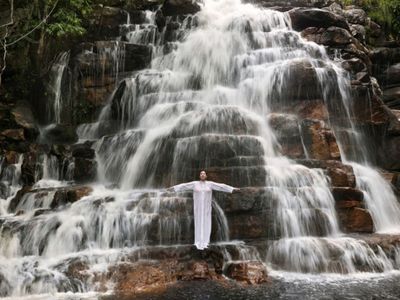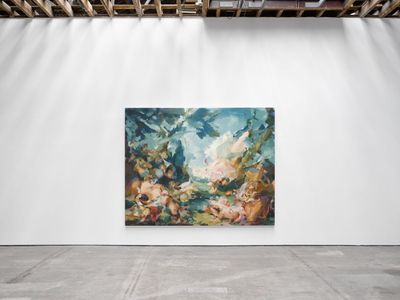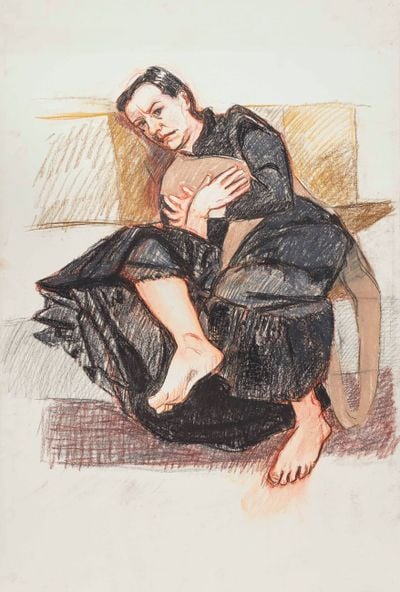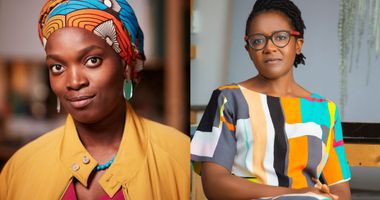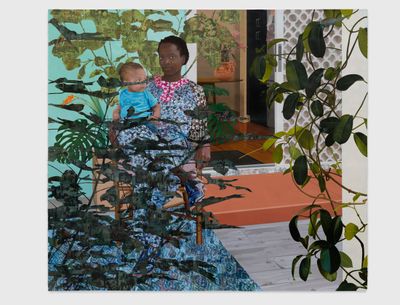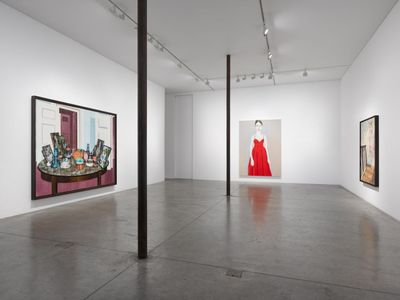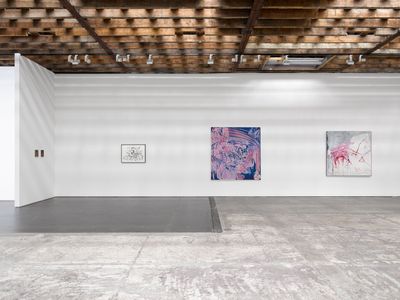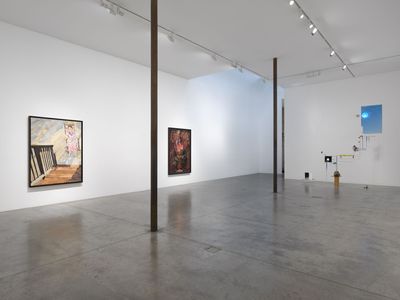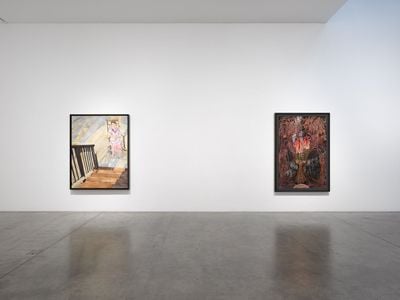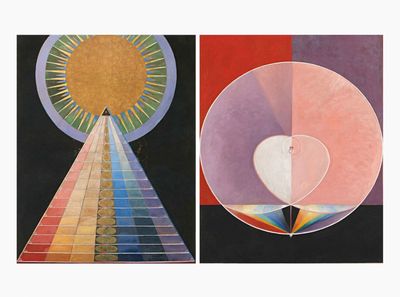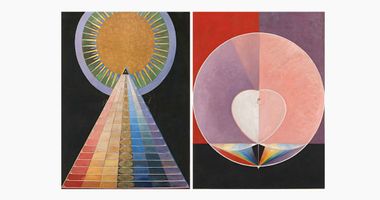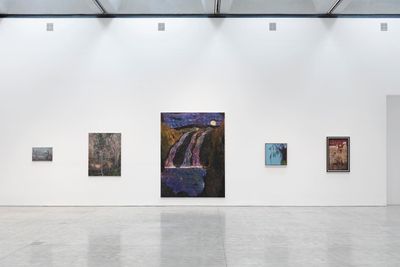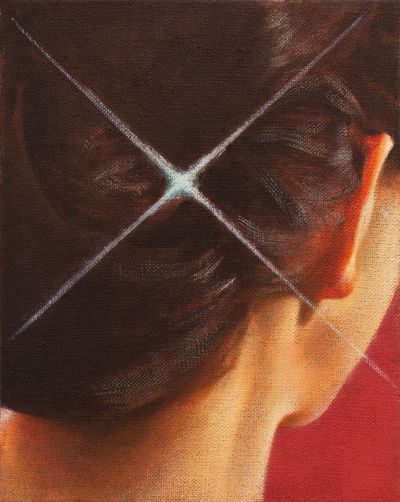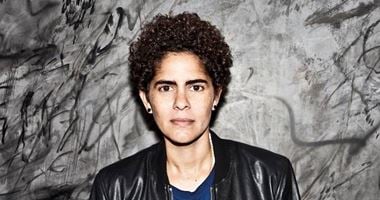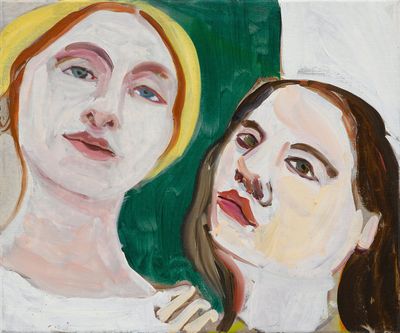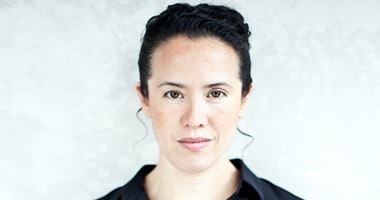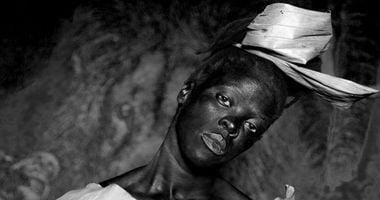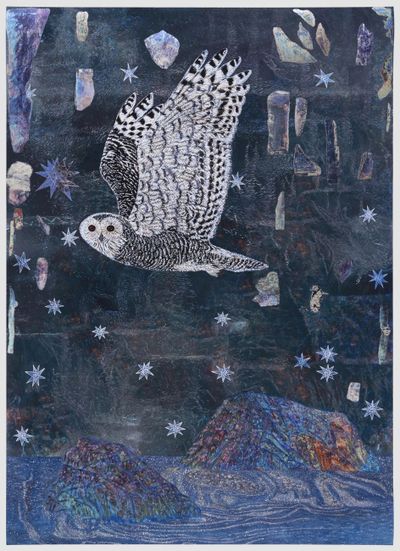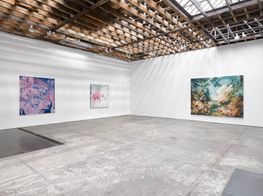Katy Hessel on Great Women Artists and Rewriting His-tory
Katy Hessel at The London Library. Photo: © Ameena Rojee.

Katy Hessel at The London Library. Photo: © Ameena Rojee.
E.H. Gombrich's seminal text The Story of Art (1950) is one of the most widely read introductions to Western art history. Yet, in its first edition, it didn't reference a single woman, and in subsequent editions, only one (Käthe Kollwitz).
In September 2022, British art historian Katy Hessel responded to this omission, publishing her version of art history, The Story of Art Without Men. The book swiftly became a bestseller, speaking to a volume of interest in histories that have been overshadowed.
Like Gombrich's tome, The Story of Art Without Men traverses a wide expanse of art history covering 500 years from the Renaissance. Hessel, however, dismantles the traditional Western art canon, firmly positioning women at the heart of the narrative, delving into their lives and art practices, and situating them within historical, social, and political contexts.
Beyond her work as an art historian and author, Hessel is a dynamic force in the contemporary art world. She is the creator of the immensely popular Instagram account @thegreatwomenartists and 'The Great Women Artists' podcast, where she engages in insightful conversations with artists like Marina Abramović and Lubaina Himid, as well as acclaimed writers such as Ali Smith and Deborah Levy.
Hessel has curated exhibitions at prestigious galleries such as Victoria Miro, Kasmin Gallery, and Stephen Friedman Gallery. In February 2019, she commandeered the fourth floor at Tate Modern for Tate Lates, making a bold statement about the importance of women artists in contemporary art.
She has also lent her personable, accessible storytelling to the world of broadcasting and broadsheets. Hessel writes and presents documentaries for the BBC, such as 'Inside Museums: Artemisia Gentileschi' (2020) and 'Art on the BBC: Monet – The French Revolutionary' (2022), and contributes a regular column, The Great Women's Art Bulletin, for The Guardian.
In recognition of her contributions, Hessel was honoured with a spot on the Forbes '30 Under 30' list in 2021. She was appointed as Curatorial Trustee of the historic house and art space Charleston in East Sussex in 2022, and in 2023 she became a Visiting Fellow at the University of Cambridge.
In this interview, Hessel discusses The Story of Art Without Men, why art matters to her, and how she tries to make it accessible to as many people as possible. She also discusses one of her favourite interviewees on the GWA podcast and names the one artist from history she would most like to meet.
ADYou have spoken about how you discovered art by visiting museums as a child and how that triggered your interest. Why do you think art has an impact on you?
KHI am in awe of artists. They create a visual language which, as artist Paula Rego's son Nick Willing said in my podcast with him, 'can take you to a place where no one has ever been before, and bring back a picture that we can instantly recognise'. Artists can help you understand how you feel about the world and yourself and can help you make decisions in life.
Artists can help you understand how you feel about the world and yourself and can help you make decisions in life.
I wrote a piece on heartbreak for The Guardian recently inspired by a comment made by someone who came to one of my book signings and asked: what can they look at to 'heal' heartbreak. It made me see how artworks like Rego's can speak to us on many different levels. In the article, I write about the likes of Tracey Emin's neons, which read 'Be Brave' or 'It's a crime to live with a person you don't love', as well as Njideka Akunyili Crosby's images exploring the complexity of motherhood, and Gluck's heartbreaking image of unrequited love.
ADWhy did you start The Great Women Artists podcast?
KHI wanted to understand the 'why'. Why was an artist considered to be so great? Why was their work important? Why did they create the work they created? But also look at how they came to this subject. Like so many of us, there are artists that we don't immediately warm to. But after learning about them, they became the most interesting people to me.
ADYou recently published your first book, The Story of Art Without Men (2022). In your conversation with Russell Tovey and Robert Diament for their podcast 'Talk Art', you describe yourself struggling with reading and writing at school. To what extent did this struggle inform how you approach what you do?
KHI've always been passionate about learning about art and artists, but occasionally I would struggle when reading exhibition texts and academic journals. I wanted to create my own language when talking about art, one that worked for me and I hope would appeal to anyone of any level of art history—I think the conversation is much richer and stronger if there are more of us involved.
I think the conversation is much richer and stronger if there are more of us involved.
I also believe in the emotional response to art, so I always start my podcast with an initial question about how someone might feel in front of a work. I'm fascinated to know what draws people to certain things—from what might draw an art historian to a certain artist, so much so that they almost dedicate their life to that subject. I'm interested in it on a human level.
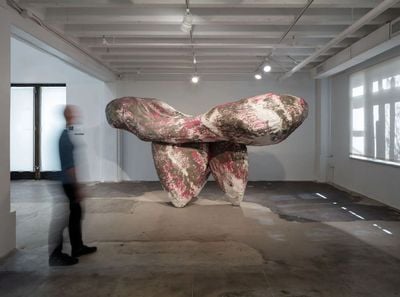
ADThrough your podcast, you have spoken to some incredible people. Is there a particular interview that stands out?
KHI have spoken with some amazing people, but certainly, one interview that comes to mind is that with Phyllida Barlow, who has since passed away. I am very grateful I could interview her and am so lucky that a record of that conversation exists. After she died, I went back and listened to it again—it's amazing that I can still learn from that conversation now.
ADThe Story of Art Without Men relates to the fact that E.H. Gombrich's The Story of Art, in its first edition, didn't reference a single woman, and in subsequent editions, only one. Your book addresses this absence by focusing on non-male artists. How did you decide what to include?
KHI am careful to say that the account I give is not an attempt to set out a definitive art history—that would be an impossible task. My account is very much from where I stand in my life so far, breaking down the Western canon from within the culture I grew up in. I believe that art should be written about from a personal perspective and viewpoint, and my book is very much my take on the story of art (without men).
I hope the book encourages people to write their own versions of art history. I found a great quote by Sheila Heti the other day about forming our own language, which really moved me:
The number of people who feel like they have to get creative writing baffles me ... Why do you think this is something you need to do in an academic sense? Why do you need a degree to write? It doesn't make any sense to me. You were writing stories when you were 12 years old. Why does that have to be conferred to you to be a writer? All you need to do is write.
This quote helped me validate my writing of a history. When I was younger, I was trying so hard to conform to a certain style and then I thought: anyone can do this, do it in your own way; there is no strict formula.
ADThere's discussion today about a lack of art criticism. Possibly part of that lack is because people fear being judged because they are too scared to write what they think.
KHI think social media has also contributed to this—because while it has opened the possibility for people to share their views on art, it can also be a daunting space. I think the art world needs to give more permission to more people to have an opinion on art. It's imperative that we have artists from a range of backgrounds but also art historians, curators and critics from an array of backgrounds who curate what we see on our museum walls and write about art.
ADYou wrote about this in your column for The Guardian—about the dominance of male, white art critics.
KHIt's true—where I live in the U.K., we need a wider range of critics from different backgrounds, ages, etc. Multiple opinions and viewpoints are imperative. Otherwise, we end up with one single narrative, which isn't helpful. In my article, I wrote about the scathing reviews Georgia O'Keeffe and Hilma af Klint received from male critics because they were women artists.
ADYou bring attention to many overlooked artists in your book. There is a chapter in your book on 'The Great Era of Experimentalism', in which I was fascinated to read about the artist Janet Sobel, whose contribution to American Expressionism was overlooked. As af Klint was overshadowed by Kandinsky in relation to abstraction, Sobel appears to have been overshadowed by Jackson Pollock.
KHSobel was a self-taught artist who took up painting at 45. Her work was inspired by emotion and music. According to the critic Clement Greenberg, she was one of the first artists in the context of American painting to demonstrate the 'all-over' painting technique. Her work caught the attention of Peggy Guggenheim, who showed Sobel's painting Milky Way (1945) in a solo exhibition in 1946. Apparently, Pollock saw Sobel's work and was enthralled by it. Yet why are Pollock's breakthrough drip paintings, introduced to the world in 1947, so well known and Sobel's are not?
ADYou curated the show Dissolving Realms (10 June–12 August 2022) at Kasmin Gallery, which included work by other Abstract Expressionists, Lee Krasner and Helen Frankenthaler as well as Surrealists such as Leonora Carrington—all of whom are also featured in your book. They were shown alongside contemporary painters. What has curating taught you about artists and art that writing did not?
KHCurating is an experiment—you don't know how it will turn out. Whereas with writing, you can keep chiselling away until you shape it as you want it to be, curating can open conversations that are excitingly unexpected. Dialogues can happen between paintings on a purely visual level, and I believe there is also much to be learned from working with and listening to artists in this way.
Many artists in Dissolving Realms knew each other—like Frankenthaler and Krasner or Yukhnovich and Showering—and it was interesting to show their works together. But I also loved introducing younger contemporary artists into conversations with artists from other generations—putting Louise Giovanelli between Krasner and Howardena Pindell, for example, or Sedrick Chisom's work near that of Leonora Carrington, Jake Grewal, and Antonia Showering.
ADWhat was the most difficult chapter of the book to write?
KHThe most difficult chapter to write was Part Five, which covers the period from the year 2000 until publishing because— thankfully, unlike the earlier chapters—there was an abundance of material on non-male artists to draw from. But what we've also seen is the art world opening up and changing at such a rapid pace. I was lucky enough to speak to so many figures who have been at the forefront of this change, whether it be about decolonisation, representation, the re-rise of public art. I spoke to artists like Kara Walker, Doris Salcedo, Julie Mehretu, Cao Fei, Bharti Kher, Mickalene Thomas, Njideka Akunyili Crosby, Lynette Yiadom-Boakye, Toyin Ojih Odutola, and Chantal Joffe.
ADGombrich's final chapter in his second edition is titled 'A Story Without End'. You curated a show for Victoria Miro titled The Story of Art as it's Still Being Written in 2022. Could you talk about this?
KHIt's interesting to think that Gombrich wrote his book in the period after the Second World War, and I wrote mine in 2020. In many ways, these two periods are bookends; times when everything was shifting—I wrote mine against the background of major societal and political changes, and during the Covid-19 pandemic.
Although my book puts artists into chapters, they are not the products of categories; rather, categories are the products of artists.
Like the book's final chapter, the show at Victoria Miro aimed to bring together artists defining the movements and styles of the past 20 years. Those working in collage, for example, Wangechi Mutu, Deborah Roberts, and María Berrío; those reinventing sculpture like Sarah Sze; photographer Zanele Muholi; artists working in portraiture like Celia Paul and Amy Sherald; and painters like Tracey Emin and Flora Yukhnovich.
Of course, it's impossible to write about artists' careers that are still ongoing or, for some, just beginning, but the thing about book writing is that it has to be linear. Although my book puts artists into chapters, they are not the products of categories; rather, categories are the products of artists. The title of the Victoria Miro show was an opportunity to mark the fact that the story of art is not definitive but a story that is still evolving and continuing to be rewritten day by day.
ADHow would you define the artists that you tend to respond to?
KHI am drawn to anything that gives me a visceral reaction. I love pottery. I love tapestry. I love Anni Albers. I love Ruth Asawa's wire sculptures. I love the photography of Francesca Woodman, Cindy Sherman. I love Jenny Holzer, and Zoe Leonard. I am obsessed with the Guerrilla Girls.
I am in awe of painters. In the book's last chapter, I discuss artists like Jadé Fadojutimi. She is someone I am completely blown away by how she creates a language from paint.
ADYou spent six weeks in New York promoting the U.S. edition of your book. Who else would you include if you could write another chapter based on what you saw there?
KHWhile there, I interviewed artists like Marilyn Minter and Kiki Smith for the podcast. They would be in the book if I could add to it. At TEFAF in New York, I saw Martha Jungwirth's work. She isn't in the book. I wish she were. You can recognise her stroke from miles away.
ADAt the end of your podcasts, you ask each guest which woman artist they would have dinner with from any period. Who would you have dinner with?
KHIt would have to be the Italian Baroque painter Artemisia Gentileschi, considered among the most accomplished 17th-century artists. She created work 400 years ago that still speaks to me on a deeply personal level. Her courage against all odds to be a painter is extraordinary—she paved the way for so many artists. To quote her from a letter she wrote to a patron in 1649: 'I will show you most illustrious Lordship what a woman can do...' —[O]



